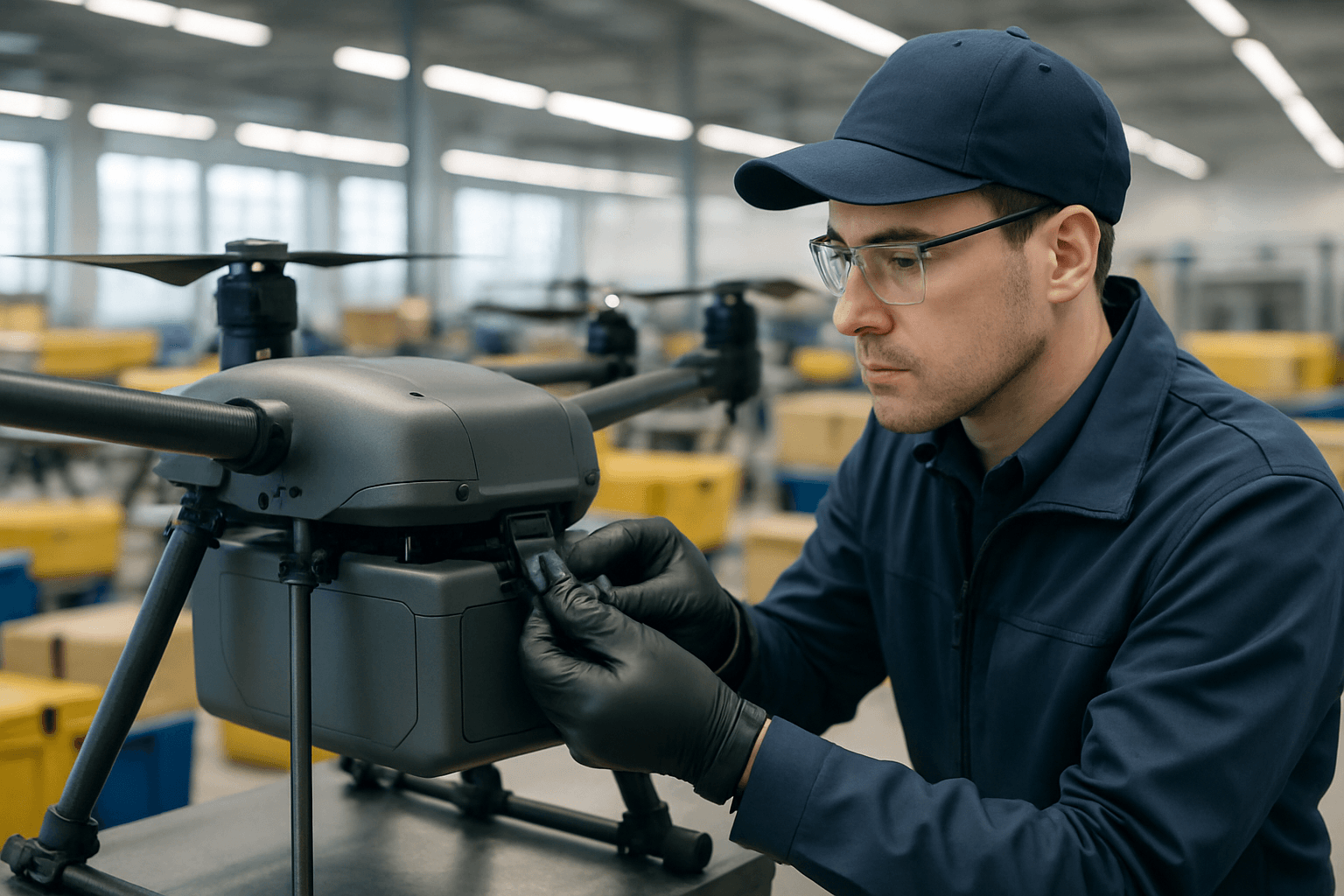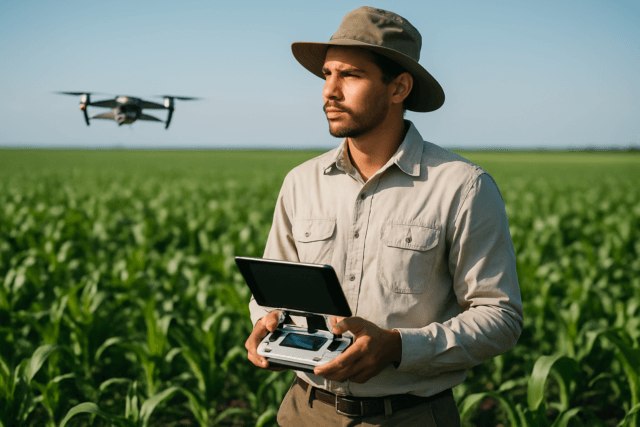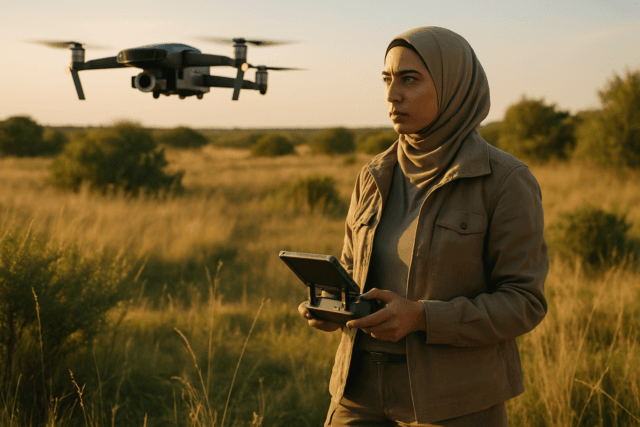Drone delivery services, while offering rapid and efficient transportation, introduce unique security challenges for the packages they carry. As Unmanned Aerial Vehicles (UAVs) navigate airspace, ensuring the integrity and safety of the payload against theft, damage, or tampering is paramount for consumer trust and operational viability. A multifaceted approach, combining robust physical design, advanced technological safeguards, and stringent operational protocols, is employed to secure drone deliveries.
Physical Security Measures
The initial layer of defense for drone-delivered packages lies in the physical design of the drone’s payload mechanism and the package itself. These measures aim to deter opportunist theft and protect against environmental damage during flight and at the point of delivery.
Secure Payload Compartments
Delivery drones are equipped with specialized compartments or vaults designed to securely hold packages throughout the flight. These compartments are typically integrated into the drone’s body, providing a contained and often lockable space. Some systems utilize inter-changeable carrier racks that are mechanically secured to the drone, ensuring uniform load distribution and attachment. Companies like Valqari emphasize a “secure vault” and “protected payloads” as part of their systems. These designs prevent direct access to the package mid-flight or during a momentary stop. The materials used for these compartments are often robust to withstand potential impacts and offer protection from weather conditions.
Tamper-Evident Design and Sensors
To detect any unauthorized access or damage, packages and their compartments can incorporate tamper-evident features. These might include seals that break if the package is opened or sophisticated sensors that can detect changes in the package’s state. Some systems feature “open/close sensors” on the package itself. Additionally, internal sensors within the drone’s payload bay can monitor conditions crucial for package integrity, such as temperature (for perishable goods) and shock (to detect mishandling or impacts). This real-time monitoring ensures that if a package experiences an anomaly, an alert can be triggered, and appropriate action taken.
Controlled Release Mechanisms
The method of package release is a critical security point. Drones often employ controlled release mechanisms that only dispense the package upon successful authentication at the designated delivery point. This can involve a drop-down winch system that precisely lowers the package to a specific location, rather than simply dropping it from altitude, reducing potential damage and making it harder for unauthorized individuals to intercept. Other systems may use quick-release delivery boxes that only open when the drone is at the correct location and the recipient has been verified. Some drones can interact with smart home gateways and secure door locks, allowing the package to be delivered directly inside a recipient’s home or a secure delivery bin, preventing “porch piracy.”
Technological Security Measures
Beyond physical barriers, advanced technological solutions form the backbone of drone package security, addressing potential cyber threats, unauthorized access, and ensuring precise delivery.
GPS Tracking and Geofencing
All modern delivery drones utilize GPS technology for accurate navigation, allowing them to follow pre-programmed routes with remarkable precision. This enables consistent, on-time deliveries and ensures drones stay on course, even in densely populated areas. Real-time GPS tracking allows operators to monitor the exact location and status of their drones, crucial for fleet management and ensuring adherence to flight paths.
Geofencing, a virtual geographical boundary set up using GPS or RFID technology, is a potent security tool. It allows for precise control over where drones can and cannot venture, autonomously restricting them from entering high-risk, unsecured areas or no-fly zones. If a drone deviates from its approved flight path, an alert can be triggered, signaling a potential security breach or malfunction.
Real-time Monitoring and Surveillance
Drones are equipped with high-resolution cameras and various sensors (like ultrasonic, infrared, lidar) that enable them to “see” their surroundings and collect real-time data. These cameras monitor the delivery environment, identify designated landing zones (often using visual markers or QR codes), and detect potential obstacles. For security, these cameras can record the entire delivery process, providing video evidence in case of theft or tampering. Some systems employ a “wingman” drone hovering overhead with cameras to record if anything happens to the delivery drone or package.
Remote monitoring via cloud platforms allows operators to track drone location, update flight paths, and analyze delivery metrics in real time, enhancing efficiency and security.
Data Encryption and Secure Communication
The digital systems controlling drones are complex and rely heavily on secure digital functionalities. To combat cyber threats such as hacking, data breaches, spoofing, and GPS jamming, robust cybersecurity measures are essential.
- Encryption: Protects data exchanged between drones, control systems, and cloud platforms, ensuring confidentiality and preventing unauthorized access to sensitive information like customer data and delivery details.
- Secure Communication Protocols: Drones use strong and secure communication protocols to maintain a continuous and guaranteed link with ground control stations. This includes techniques like frequency hopping and spread spectrum to reduce interference and make communications harder to intercept.
- Anti-Jamming Technology: Prevents intentional signal disruption by malicious actors, ensuring the drone can maintain control and navigation capabilities.
- Cyber Hardening: Incorporating security at each step of the drone’s development pipeline, from software to firmware, reduces vulnerabilities that could be exploited by cyberattacks.
Authentication and Authorization Protocols
Ensuring that only authorized individuals or systems can interact with the drone and receive packages is crucial.
- Biometric Authentication: Utilizing distinct human characteristics such as facial recognition or fingerprint scanning can ensure that only authorized recipients can access and control the delivery process or release the payload.
- One-Time Password (OTP) Systems: Some models employ an OTP authentication mechanism where the recipient recites a password sent to their phone (via SMS, app, or email). If the drone’s voice recognition system verifies the OTP, the package is released.
- RFID-based Security: Radio Frequency Identification (RFID) systems can be used to seal the payload, ensuring tamper-proof security during transit. These RFID tags act as “keys” that are made available to customers, and the drone’s RFID reader acts as a “lock,” authenticating the medical supplies or package throughout the delivery process, minimizing theft, tampering, and counterfeiting risks.
- Blockchain Technology: Blockchain offers a decentralized, immutable ledger that can enhance drone security by ensuring transparency in transactions, improving traceability, and providing secure data storage. It can be used for secure data transactions, verify and validate the authenticity of transactions, manage decentralized identities for drones, and record flight logs, maintenance records, and certifications. This reduces the risk of fraud and unauthorized access. IBM has patented a blockchain system for preventing anonymous theft by drones, tracking altitude and uploading delivery information.
Autonomous Navigation and Obstacle Avoidance
While primarily safety features, autonomous navigation systems and obstacle avoidance capabilities indirectly contribute to package security. Drones equipped with machine learning and AI can adapt to changing environments, analyze data from sensors, and avoid obstacles like other objects or even wildlife. This reduces the risk of crashes that could damage packages or make them vulnerable to theft. A “sense-and-avoid” system, like Amazon’s, enables safe and autonomous operations without continuous visual observers.
Operational Security Protocols
Beyond the drone’s inherent capabilities, the operational framework within which drone deliveries occur also plays a significant role in package security.
Designated Landing Zones
Utilizing pre-defined and potentially secure landing zones helps to control the environment at the point of delivery. These zones can be monitored, equipped with secure drop-off points, or even integrated with smart home systems to ensure the package is delivered to a safe, controlled location. This minimizes the time a package is exposed and vulnerable after release.
Return-to-Home Failsafes
In the event of a system malfunction, low battery, or loss of communication, drones are programmed with return-to-home (RTH) failsafe features. This protocol instructs the drone to return to a pre-determined secure location (e.g., the base station or a designated safe zone) instead of attempting an uncontrolled landing or hovering, thus protecting the drone and its payload from being lost or compromised.
Security Personnel/Remote Oversight
Although the goal of drone delivery is often automation, human oversight remains a critical security component. Remote operators monitor drone flights in real time, ready to intervene if anomalies occur. In some early implementations, a human handler might be present at the delivery location to guide the package delivery and ensure a secure hand-off to the customer. This human element provides an additional layer of verification and security, particularly for high-value or sensitive deliveries.
Future Trends and Challenges
The field of drone package security is continuously evolving. Future advancements are likely to include:
- Advanced Biometrics and IoT Integration: Deeper integration of biometric authentication at the point of delivery and comprehensive IoT sensor networks to monitor every aspect of the package’s journey and environment.
- Quantum-Resistant Cryptography: As quantum computing advances, the development of quantum-resistant blockchain protocols and cryptographic primitives will become crucial to protect against future hacking threats.
- Counter-Drone Measures: Research and development in counter-drone technologies (e.g., radar, acoustic sensors, thermal imaging, anti-drone guns) are ongoing, which while sometimes controversial, could be used for defensive purposes in designated security zones to protect delivery routes.
- Decentralized Autonomy and AI: Combining blockchain-based identity management with AI algorithms for more intelligent, adaptive security measures, including anomaly detection in drone behavior.
Despite these advancements, challenges remain, including regulatory hurdles, the limited payload capacity of current drones, and their sensitivity to adverse weather conditions. Addressing these issues, alongside ongoing security innovations, will be key to the widespread and secure adoption of drone delivery services.
In summary, ensuring package security during drone flight is a complex endeavor that integrates robust physical containment, sophisticated cyber-physical security measures, and vigilant operational oversight. As drone delivery technology matures, continuous innovation in these areas will be vital to build a trusted and resilient logistics network.





